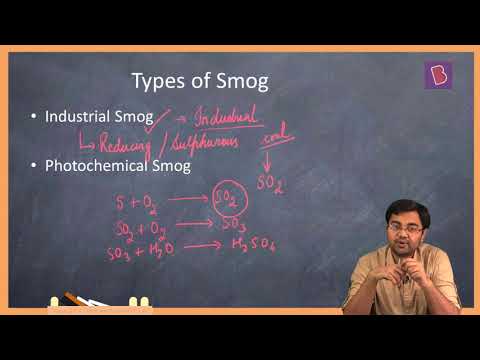Smog is the term derived from two words smoke and fog. It is a kind of intense air pollution. The word smog was coined in the 20th century. This article lucidly explains all the important information about smog; ranging from how it is created, harmful effects, different types, and measures that can be adapted to control Smog.
Aspirants would find this article very helpful while preparing for the IAS Exam.
| Aspirants should begin their preparation by solving UPSC Previous Year Question Papers now!!
To complement your preparation for the upcoming exam, check the following links:
|

What is Smog?
Smog is air pollution that reduces visibility. The word “smog” was coined in the early 20th century, and is a contraction (portmanteau) of the words smoke and fog to refer to smoky fog due to its opacity, and odour.
The word was then intended to refer to what was sometimes known as pea soup fog, a familiar and serious problem in London from the 19th century to the mid-20th century.
This kind of visible air pollution is composed of nitrogen oxides, sulphur oxides, ozone, smoke and other particulates. Man-made smog is derived from coal combustion emissions, vehicular emissions, industrial emissions, forest and agricultural fires and photochemical reactions of these emissions.
How is Smog created?
Smog is the result of the reaction of emissions from automobiles, factories, and industries with the sunlight and atmosphere.
Why is Smog Harmful to Health?
When smog is inhaled, it may cause the following harmful effect on humans
- Coughing and wheezing
- Burning sensation in eyes and throat
- Risk of serious heart diseases
- Risk of serious lung disease.
- Dangerous for people suffering from asthma.
- Smogs can also kill plants.
Smog – 2 Types
The causes behind the formation of the smogs are different. Hence they are classified into 2 different types.
- Photochemical Smog (Also called Los Angeles Smog)
- Sulfurous smog (Also called London Smog)
Which is the Most Commonly Occurring Smog?
Photochemical smog is the most common occurring smog.
What Causes Photochemical Smog?
- Photochemical smog is created when sunlight reacts with nitrogen oxides and at least one volatile organic compound (VOC) in the atmosphere. This kind of smog requires neither smoke nor fog.
- Nitrogen oxides are emitted in the atmosphere from automobiles, power plants, factory emissions.
- Volatile organic compounds are released in the atmosphere due to paints, gasoline, and cleaning solvents.
What Causes Sulfurous Smog?
Sulfurous smog is the result of a high concentration of sulfur oxides in the atmosphere. This is usually caused by the burning of fossil fuels like coal.
Where Do We Find Smogs?
- Usually found in big cities with a heavy presence of vehicles and industries
- Found in cities that are located in basins surrounded by mountains, since the smog gets trapped and cannot be carried away by the wind.
How Long Does it Take to Form a Smog?
The time required to form a fog is directly dependent on the temperature.
How to Control Smog?
- Using renewable sources of energy
- Reducing the number of vehicles, for this to happen there should be an efficient public transport system with last-mile connectivity
- Increase in energy efficiency.
- Use Smog towers, this has been used successfully in China.
Also read about Stubble Burning which is one of the major concerns for the smog in the national capital, Delhi.
Smog:- Download PDF Here
The above details would help candidates prepare for UPSC 2023.
Related Links
| IAS Salary | UPSC Syllabus |
| Forest Survey of India | UPSC Mains GS 3 Strategy |
| Environment and Ecology Notes for UPSC | Environment Conventions and Protocols |
| Air Pollutants | Measurements of Air Pollution |

Comments